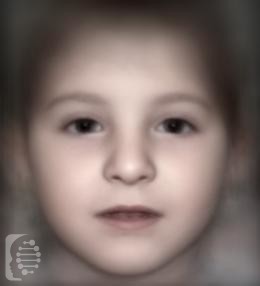What is Filippi syndrome (FLPIS)?
Filippi syndrome is a rare genetic syndrome. Since 1985 there have been less than 25 cases diagnosed worldwide, to date.
The syndrome is characterized by its distinct facial features, intellectual disability, and webbing of the fingers and toes.
Syndrome Synonyms:
Scott Craniodigital Syndrome with Mental Retardation; Syndactyly, Type I, with Microcephaly And Mental Retardation
What gene change causes Filippi syndrome (FLPIS)?
Changes in the CKAP2L gene are responsible for the syndrome, which is inherited in an autosomal recessive pattern.
Autosomal recessive inheritance means an affected individual receives one copy of a mutated gene from each of their parents, giving them two copies of a mutated gene. Parents, who carry only one copy of the gene mutation will not generally show any symptoms but have a 25% chance of passing the copies of the gene mutations onto each of their children.
What are the main symptoms of Filippi syndrome?
- The main physical characteristics of the syndrome include a small head, a depressed nasal bridge, a high forehead, thin nostrils, and widely spaced eyes.
- Webbing and fusion of the fingers and toes are characteristic of the syndrome. As is an inward bending of the 5th digit.
- Most individuals with the syndrome have mild to severe intellectual disability, and language and speech development delay. Some individuals never learn to speak.
- Low birth weight and short stature are common features, and most infants with the syndrome are also diagnosed with failure to thrive. Dental abnormalities are also not uncommon.
Possible clinical traits/features:
Sparse hair, Proptosis, Frontal bossing, Ventricular septal defect, Microcephaly, Short philtrum, Intellectual disability, Intrauterine growth retardation, 2-4 toe syndactyly, Neurological speech impairment, Microdontia, Wide nasal bridge, Ambiguous genitalia, Cerebellar atrophy, Broad forehead, Prominent nasal bridge, Hypertrichosis, Postnatal growth retardation, Cognitive impairment, Hypodontia, Underdeveloped nasal alae, Visual impairment, Short stature, Thin vermilion border, Autosomal recessive inheritance, Optic atrophy, Seizure, Single transverse palmar crease, Finger syndactyly, Delayed skeletal maturation, Dystonia, Cryptorchidism, Decreased body weight, Clinodactyly of the 5th finger.
How is it diagnosed?
To find out if someone has a diagnosis of Filippi syndrome, it is important to have a consultation and evaluation with a clinical genetic specialist. Specialists may also suggest specific genetic testing or other types of tests to help reach a diagnosis. FDNA’s AI technology can help speed up the diagnostic process by analyzing facial features and other health information.

